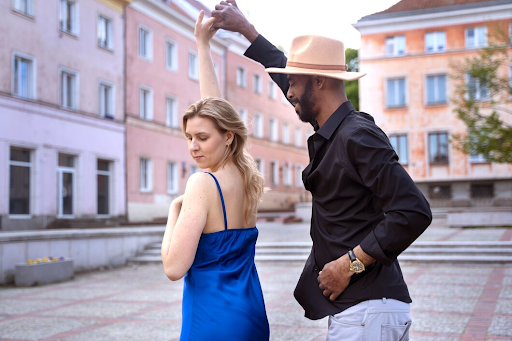In our increasingly interconnected world, the blending of cultures creates a vibrant tapestry of influences that drive change across various aspects of life. Nowhere is this cultural interplay more evident than in dance, a universal language that transcends geographic boundaries and socio-cultural constructs. Among the myriad influences on modern dance, the influence of Samba and Salsa dance styles stands out as particularly significant. These dynamic dance forms, rooted in rich cultural traditions, have left an indelible mark on the evolution of contemporary dance styles, shaping not only the movements but also the social and artistic aspects of dance.
Origins of Samba and Salsa: A Fusion of Cultures
Samba and Salsa, though distinct in their origins, share a common thread in their African roots, enriched by diverse cultural influences. Samba originated in Brazil, emerging from the fusion of African rhythms with indigenous and Portuguese elements. It evolved into a lively, energetic dance that became synonymous with Brazil’s Carnival, reflecting the country’s vibrant culture. On the other hand, Salsa has its roots in Afro-Cuban rhythms, with American jazz adding an extra layer of complexity. This blend of influences created a dance form that is both sensual and rhythmic, making it a staple in Latin nightclubs and festivals around the world.
The Diverse Influence on Modern Dance Styles
The impact of Samba and Salsa on modern dance is diverse and multi-faceted. Salsa’s rhythmic footwork, characterized by quick steps and pauses, has influenced contemporary dance forms like mambo and cha-cha-cha. These elements of Salsa have become integral to the choreography of many modern dance styles, infusing them with a sense of rhythm and spontaneity. Similarly, Samba’s fast-paced, hopping steps, and dips have made their way into dances such as the quickstep and the waltz, adding a layer of exuberance and energy to these styles. Moreover, the use of the entire body in both Samba and Salsa has significantly influenced full-body dance forms like hip hop, aerobic dance workouts, and Zumba, where the focus is on dynamic, all-encompassing movement.
Partner-Based Ethos: Shaping Social Dynamics in Dance
One of the key elements of Samba and Salsa is the emphasis on partner-based dancing. This focus on partnership fosters communication, teamwork, and mutual respect between dancers, shaping the social dynamics of modern dance styles. The seamless coordination required in Salsa, for instance, can be seen in contemporary partner dances like ballroom dancing, rumba, and even break dancing. These modern styles, while varied in their execution, share a common thread of collaboration and synchronization, values that are central to the ethos of Samba and Salsa. The influence of these dances extends beyond mere movement, contributing to the development of social bonds and shared experiences on the dance floor.
Theatrical Flair: Enhancing Modern Dance-Entertainment
The theatrical flair inherent in Samba and Salsa performances has also left a lasting mark on modern dance-entertainment forms. These dances are not just about executing steps; they are about engaging the audience and creating a memorable experience. The flamboyant costumes, high-energy performances, and pulsating Afro-Latin rhythms characteristic of Samba and Salsa are now staples in reality dance TV shows, Broadway musicals, and mainstream cinema. This influence has elevated the entertainment value of modern dance, making it more vibrant, dynamic, and accessible to a global audience. The theatricality of Samba and Salsa has helped transform dance into a powerful medium of storytelling and expression in popular culture.
Choreography and Self-Expression: Broadening the Artistic Scope
The diverse movements in Samba and Salsa, their ability to narrate stories through music, and the freedom they offer for self-expression have profoundly impacted modern dance choreography. These dance styles have enriched dance as an art form, allowing it to transcend beyond mere steps and routines to touch real human emotions. In modern choreography, elements of Samba and Salsa are used to convey themes of passion, joy, and resilience, turning dance into an emotive language that resonates with audiences worldwide. This fusion of traditional and contemporary elements in dance underscores the fluidity of cultural expression and the endless possibilities for innovation in the art of movement.
Cultural Preservation: What We Learn from Samba and Salsa
While Samba and Salsa have significantly influenced the contemporary dance scene, they also serve as important reminders of the need to preserve and celebrate cultural identities. These dance styles maintain their unique cultural roots even as they evolve and integrate into modern contexts. The continued popularity of Samba and Salsa highlights the importance of cultural preservation, demonstrating how dance can be a powerful tool for maintaining and celebrating heritage. Through these dances, individuals connect with diverse cultural practices, fostering a deeper understanding and appreciation of the world’s rich cultural tapestry. Samba and Salsa, in their enduring appeal, teach us the value of cultural continuity and the role of dance in cultural expression.
Keep an eye for more latest news & updates on Vents Fashion!

